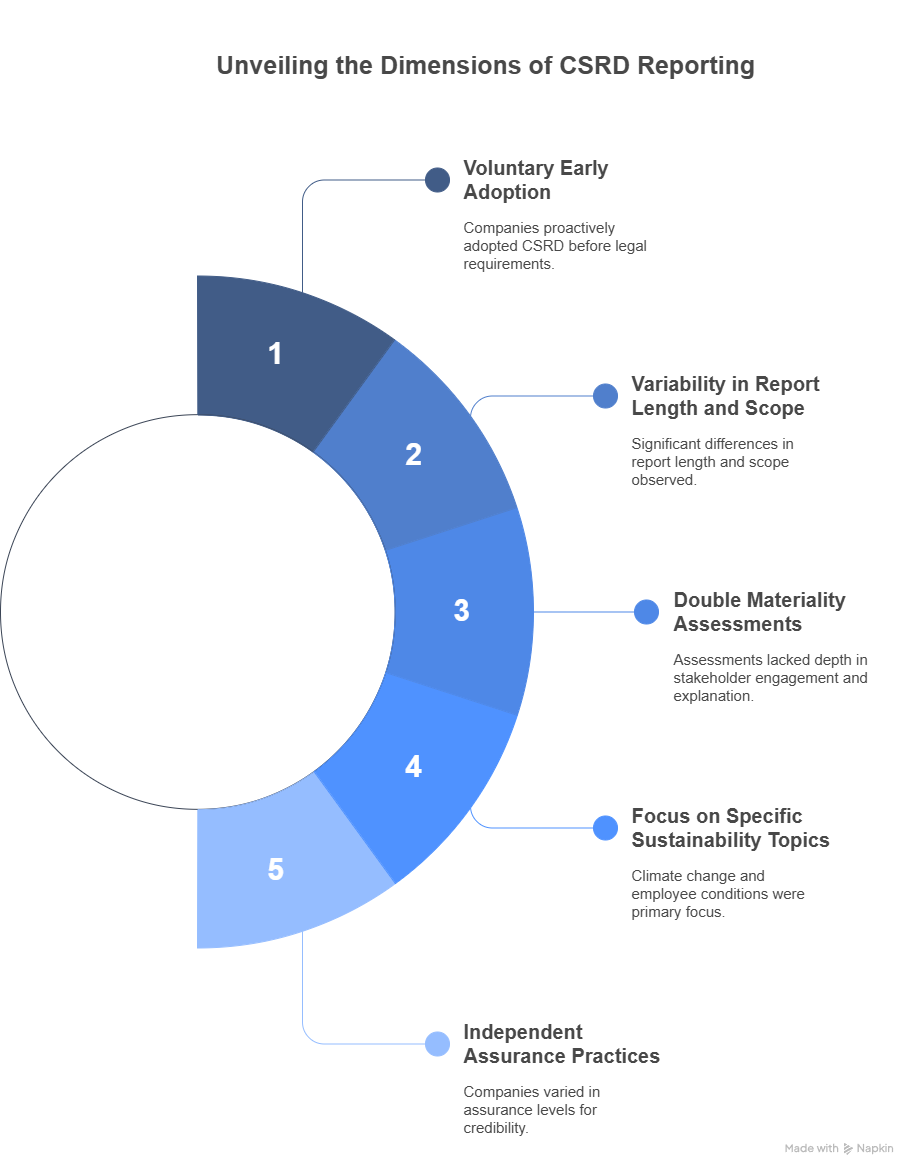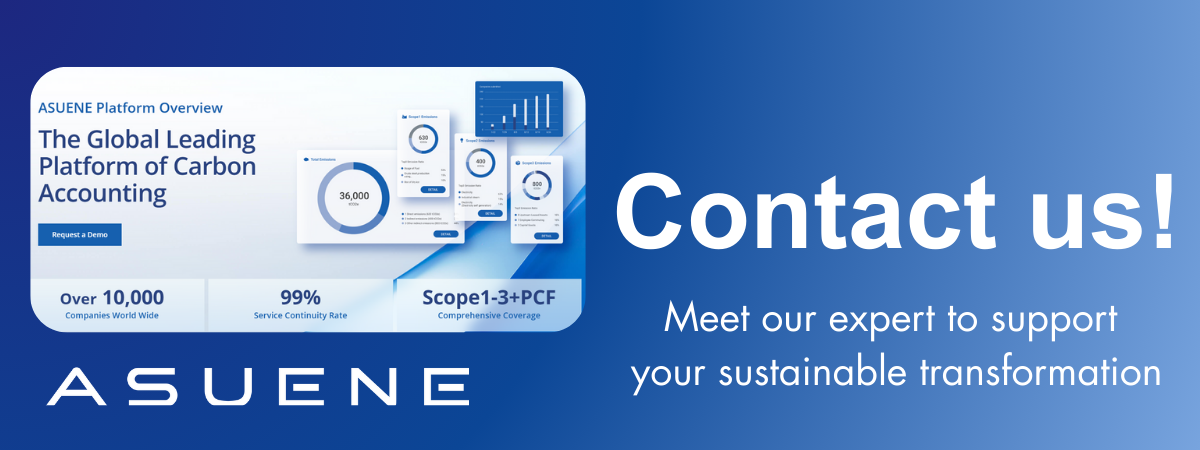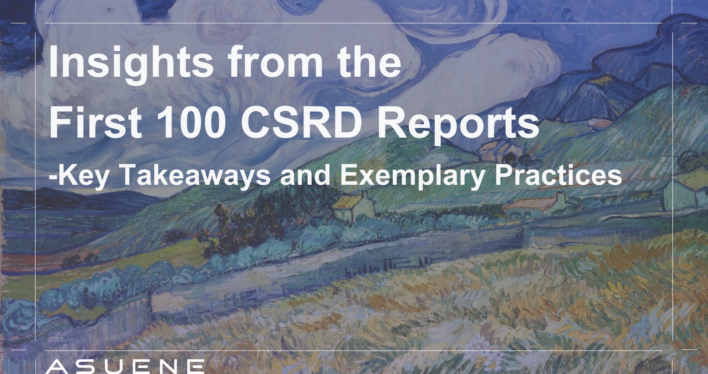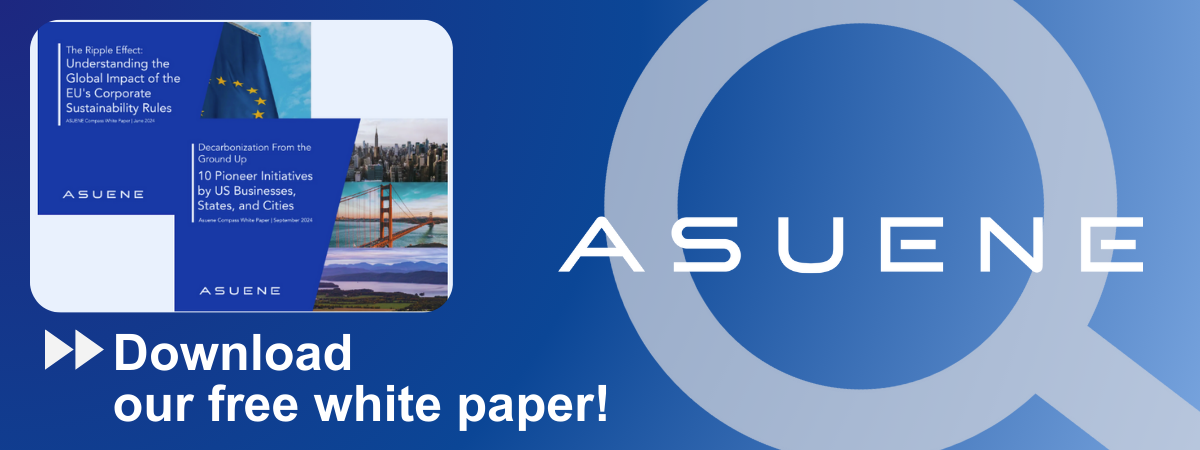- Article Summary
-
As the initial wave of Corporate Sustainability Reporting Directive (CSRD) reports has been published, a comprehensive review of the first 100 reports provides valuable insights into how companies are adapting to the new sustainability reporting standards. This analysis sheds light on emerging trends, challenges, and best practices that can guide organizations in their CSRD compliance journey. PwC Report
Key Insights from the First 100 CSRD Reports

1. Voluntary Early Adoption
Approximately 90% of the reviewed reports originated from companies in five European countries, including Germany, Spain, and the Netherlands. Notably, these countries had not yet transposed the CSRD into national law at the time of reporting. This indicates that many companies are proactively embracing CSRD standards, driven by stakeholder expectations and a commitment to enhanced sustainability transparency.
2. Variability in Report Length and Scope
The reports varied significantly in length, ranging from 30 to over 300 pages. The number of disclosed sustainability-related impacts, risks, and opportunities (IROs) also differed widely, with some companies reporting fewer than 15 IROs and others disclosing more than 80. This disparity underscores the evolving nature of sustainability reporting practices and the need for standardized approaches.
3. Double Materiality Assessments
A core component of CSRD reporting is the double materiality assessment, which evaluates both the impact of sustainability matters on the company and the company’s impact on society and the environment. The analysis revealed a high degree of variability in how companies conducted these assessments and the extent of their disclosures. While most companies engaged with internal stakeholders, many provided limited information on external stakeholder engagement.
4. Focus on Specific Sustainability Topics
Commonly reported topics included Climate Change (mitigation, adaptation, and energy), Own Workforce (particularly employee working conditions), and Business Conduct (encompassing corporate culture, supplier relationships, and whistleblower protections). Conversely, topics like Affected Communities, Water and Marine Resources, and Biodiversity and Ecosystems were less frequently addressed.
5. Independent Assurance Practices
The CSRD mandates independent assurance of sustainability reports, starting with limited assurance. Some companies have opted for reasonable assurance over specific key performance indicators (KPIs), such as greenhouse gas emissions or workforce metrics. A few have even pursued reasonable assurance for their entire sustainability report, indicating a commitment to robust and credible reporting.

Exemplary Practices in CSRD Reporting
Several companies have demonstrated commendable practices in their CSRD reporting:
Ørsted (Denmark)
Ørsted, a leading renewable energy company, has created a dedicated “Sustainability Statements” section in its annual report that aligns closely with the European Sustainability Reporting Standards (ESRS). This integrated approach positions Ørsted at the forefront of CSRD-aligned reporting.
- Introduced a new ESRS-based sustainability section within the annual report
- Eliminated the need for a standalone sustainability report
- Conducted a full double materiality assessment and robust data collection
- Recognized as one of the closest models to future CSRD compliance
Yara International (Norway)
Yara, a global leader in fertilizers and crop nutrition, blended GRI requirements with key CSRD/ESRS principles. The company notably involved top leadership in sustainability governance and embedded the statements directly into its management report.
- Followed ESRS methodology for double materiality assessments
- Integrated sustainability statements into the core management report
- Strengthened governance by involving executive-level accountability
- Focused on alignment between sustainability strategy and business performance

AkzoNobel (Netherlands)
The Dutch chemical company AkzoNobel has aligned its 2023 reporting with CSRD by incorporating ESRS 2 and detailed disclosures across environmental, social, and governance topics. Their approach also includes selective use of industry averages for emission estimates.
- Report structured around ESRS 2 (General Disclosures)
- Applied limited assurance to specific KPIs
- Used industry benchmarks for estimating some Scope 3 emissions
- Set a foundation for progressively improving data accuracy
Arla Foods (Denmark)
Arla Foods, a major dairy cooperative, fully integrated financial and sustainability reporting. Its CSRD-ready report is grounded in a comprehensive double materiality assessment and clearly outlines strategies, policies, and performance indicators.
- Fully embedded ESG information in the management report
- Used ESRS to guide disclosure of impacts, actions, and KPIs
- Conducted in-depth double materiality analysis
- Presented a structured, transparent view of sustainability governance
Philips (Netherlands)
Philips, a global leader in health technology, has included extensive ESG and sustainability metrics in its annual report. The company highlights double materiality evaluation and demonstrates clear progress toward CSRD compliance.
- Detailed explanation of double materiality process
- Broad range of ESG and sustainability KPIs disclosed
- Gradual alignment with CSRD across different departments
- Aims to boost stakeholder confidence through transparency
Conclusion
The initial CSRD reports demonstrate a significant shift towards more comprehensive and transparent sustainability reporting. However, the observed variability highlights the need for continued development of best practices and standardized methodologies. As more companies come under the CSRD’s purview, it’s anticipated that reporting practices will become more consistent, facilitating better comparability and stakeholder understanding.
For companies preparing to comply with CSRD requirements, it’s crucial to:
- Conduct thorough double materiality assessments, engaging both internal and external stakeholders.
- Develop clear and concise reporting structures to effectively communicate sustainability-related IROs.
- Seek appropriate levels of assurance to enhance the credibility of sustainability disclosures.
By proactively addressing these areas, companies can not only meet regulatory requirements but also strengthen stakeholder trust and drive sustainable business practices.
Why Work with ASUENE Inc.?
Asuene is a unique company that can provide end-to-end support for the CSRD (Corporate Sustainability Reporting Directive), encompassing GHG (Greenhouse Gas) emissions calculation, ESG data collection, reporting, consulting (Gap analysis, double materiality analysis), and third-party verification.
ASUENE USA Inc., a subsidiary of Asuene Inc., is a key player in carbon accounting, offering a comprehensive platform that measures, reduces, and reports emissions, including Scope 1-3, with expertise in decarbonization. Asuene serves over 10,000 clients worldwide, providing an all-in-one solution that integrates GHG accounting, ESG supply chain management, a Carbon Credit exchange platform, and third-party verification.
ASUENE supports companies in achieving net-zero goals through advanced technology, consulting services, and an extensive network.


